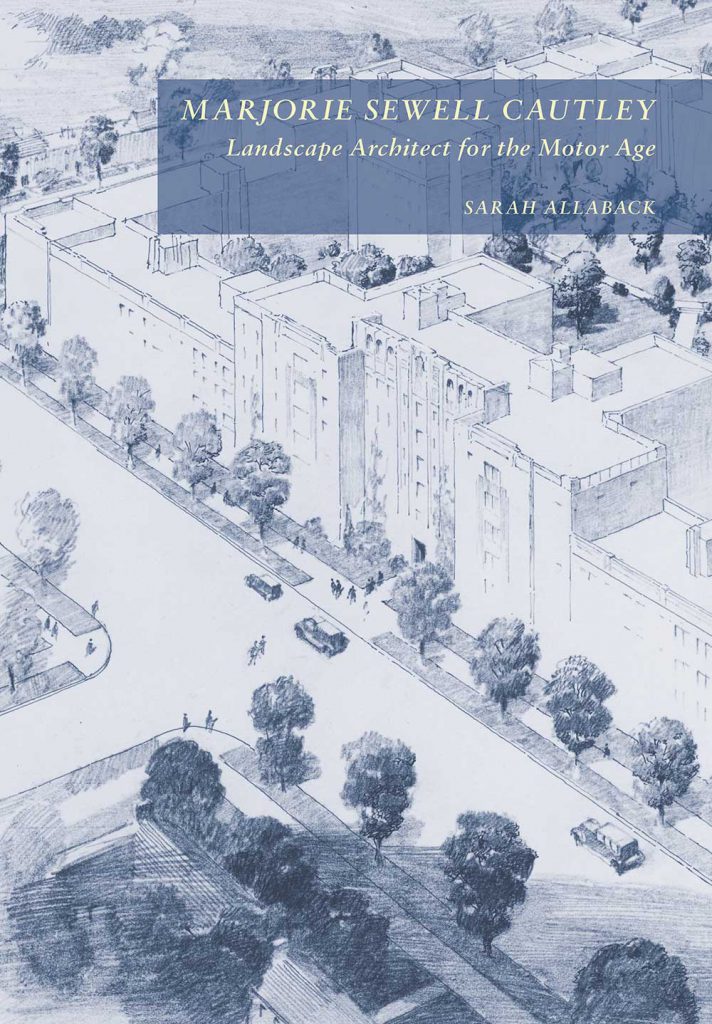Marjorie Sewell Cautley
Landscape Architect for the Motor Age
Sarah Allaback
Library of American Landscape History
| ISBN: 978-1-952620-29-4 | 208 pages | 7 x 10 inches |
| 40.00 | Cloth | Published: 11/15/2022 |
| 90 color and b&w photos and drawings | |
Marjorie Sewell Cautley (1891–1954) was the first woman landscape architect to design state parks, the first to plan the landscape of a federally funded housing project, and the first to lecture in a university city planning department. In her absorbing biography, Sarah Allaback illuminates the life and work of this remarkable practitioner. Delving into diaries, scrapbooks, correspondence, and Cautley’s wide-ranging writings, and analyzing the projects—including unprecedented work on New Hampshire state parks—Allaback weaves the story of a woman who transcended both social and professional boundaries to create humane living spaces at one of the most transformative times in American history—the introduction of the automobile into mainstream public life.
The eldest of three daughters in a peripatetic naval family, Cautley experienced an unusually unfettered life as a child. A year living in Guam left her with lifelong memories of great natural beauty and respect for the inexplicable forces of nature. The death of her mother when she was ten and of her father two years later deepened her sense of self-reliance. Exceptionally creative, Cautley found in the profession of landscape architecture more than a means to support herself.
Launching her practice in 1920, Cautley envisioned engaging landscapes to suit postwar “affordable” housing, and spaces for enjoying the outdoors. As a teenager, Cautley had witnessed the first mass-produced automobiles being driven down the streets of Brooklyn; less than two decades later, she designed the landscape of Radburn, New Jersey, a “town for the motor age.” Later in her career, Cautley designed parks to accommodate the increase in recreational travel and public gardens intended to improve middle-class American life. Raised in the Progressive Era, she approached all of her projects with a sense of profound social responsibility.
The hundreds of snapshots Cautley took of her commissions help identify the fragments of her projects that remain, from residential gardens to affordable housing projects to state parks—places that reflect the environmentally sensitive design practices landscape practitioners strive for today.
"Marjorie Sewell Cautley: Landscape Architect for the Motor Age adds a rich new layer to our understanding of Cautley's contribution to landscape architecture, especially her nuanced adaptation of public park programs to suit diverse users, her strong planting designs, and her frequent use of native plants. Allaback's narrative insightfully weaves together the detailed story of Cautley's life against a cultural backdrop that helps us make sense of her career and appreciate the originality of her works, further cementing her place in the history of American landscape architecture. Above all, it is an absorbing and inspiring read."
About the Author
Sarah Allaback
Sarah Allaback is senior manuscript editor at LALH. A coeditor of Warren H. Manning, Landscape Architect and Environmental Planner and co-author of Improving the Village, she is author of Marjorie Sewell Cautley, Landscape Architect for the Motor Age and The First American Women Architects.
